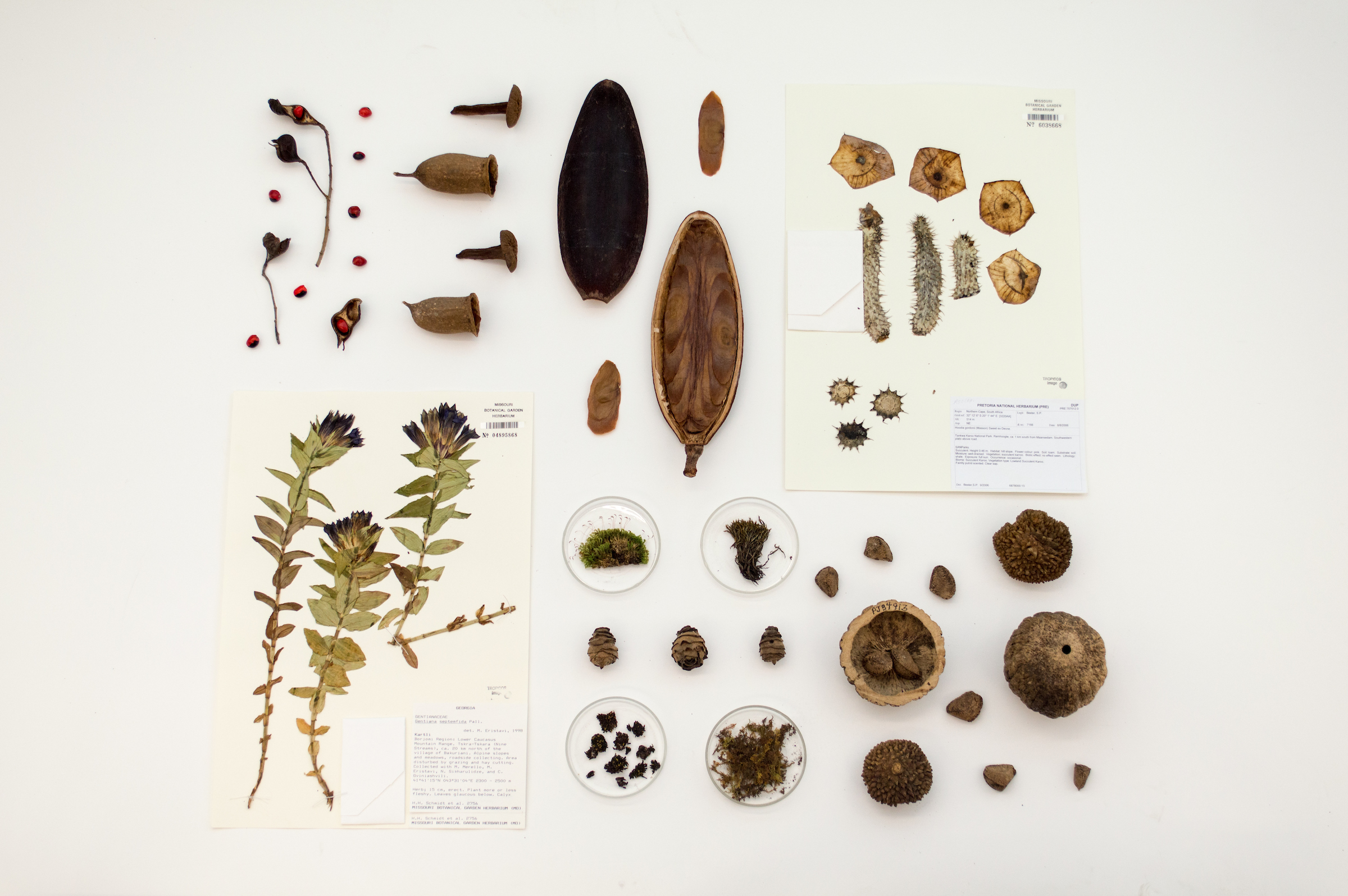
With two-thirds of the world’s plant species facing extinction, maintaining a collection of preserved, dead plant specimens may seem insignificant. But these collections are the basis for all scientific knowledge of plant diversity and have research and conservation purposes beyond the wildest dreams of early plant scientists.
The Missouri Botanical Garden maintains one of the largest Herbaria in the world, with more than 7.5 million specimens. These collections, which require physical space for storage, are becoming increasingly consolidated to fewer institutions.

What is an Herbarium?
An herbarium is a collection of preserved plant specimens that are pressed flat, dried, and glued to special paper with a label.
Picture a library but instead of books, there are sheets with dried plants and information labels on them.

When did Herbaria start?
Luca Ghini, an Italian doctor, created the first recorded Herbarium in the 16th century. Ghini dried medicinal plants from his garden between the pages of a book and used them to teach his students botany throughout the winter. Prior to this discovery, medical teachers had to rely on illustrations from books.

How old is the Garden’s herbarium?
The Herbarium predates the Garden’s 1859 public opening!
In 1857, Garden Founder Henry Shaw sent botanist George Engelmann to Europe to acquire the specimens and library books necessary to make the Missouri Botanical Garden a center for botanical research.
Engelmann purchased a collection of more than 60,000 specimens from the estate of German doctor and botanist Johann Jakob Bernhardi on December 18, 1857.

How did Herbaria use change over time?
Herbaria became even more important as European explorers encountered a wide range of unfamiliar species during the Age of Discovery. Botanists at the time prioritized identifying, describing, and naming new species, but living material was very difficult to transport during long sea voyages. Dried, pressed herbarium specimens, on the other hand, were relatively easy to transport intact.
This allowed botanists and plant enthusiasts in Europe to accumulate large collections of exotic specimens to use in their studies, exchange with one another, and show off to their friends.

where are herbaria today?
Today, there are more than 3,000 herbaria worldwide. Herbaria are in botanical gardens, universities, natural history museums, government agencies, and private collections.

What are herbarium specimens used for today?
Herbaria serve a wide variety of purposes depending on the size and scope of the collection. Some are primarily teaching tools but larger collections, like at the Garden’s, are centers of global species discovery and conservation.
Today, researchers can study the DNA, biochemistry, and insect herbivory of plants researchers dried and pressed centuries ago. Recent research using Herbarium specimens have looked at the effect of climate change on the flowering time of plants and even looking at resurrecting extinct plant species.
Whatever their local purpose, the approximately 400 million specimens these herbaria contain represent an invaluable heritage for current and future generations. They constitute an ongoing source of new insights into plant life on Earth over the past several centuries.

Herbaria in the Digital Age
Like the rest of the world, herbaria are starting to go digital. A fully digitized herbarium specimen includes a photo, a complete transcription of a specimen label, and, if possible a set of latitude and longitude coordinates so the record can be mapped.
Did you know? Labels are just as important as herbarium specimens themselves as they contain all of the important collection data such as date, collector, location, and habitat.
Digitized specimens are stored in the Garden’s online botanical database, TROPICOs, provides easy access to users around the world.

Why go digital?
Experts are able to use the rapidly growing global digital herbarium to answer new questions about taxonomy, biogeography, evolution, ecology, ethnobotany, etc.
The ability for a researcher or student to instantaneously access a high-resolution image of a specimen thousands of miles away with only internet access creates countless opportunities for collaboration, especially for resource-limited countries and institutions.

Why we still need specimens
Digitization is revolutionizing how scientists use specimens for research. But there is still no substitute for the physical specimens. Many details needed to identify species, like tiny glands on flowers, are not visible on a specimen image. Botanists come from all around the world to consult the Garden’s Herbarium specimens to study these hidden characteristics.
Just as importantly, new research using herbarium specimen like DNA extraction would have sounded like science fiction to researchers that collected these specimens centuries ago. We must hold the physical collections in trust for these future researchers, just as past scientists held did for us. Who knows what uses future scientists could find for them!
Visiting the Garden’s Herbarium
The Missouri Botanical Garden Herbarium is open to any visitor with a legitimate reason to consult the collections. Anyone wishing to study the collections should make arrangements prior to their visit by contacting the Curator of the Herbarium.
Jordan Teisher, Herbarium Director
Catherine Martin, Senior Public Information Officer

Leave a Reply